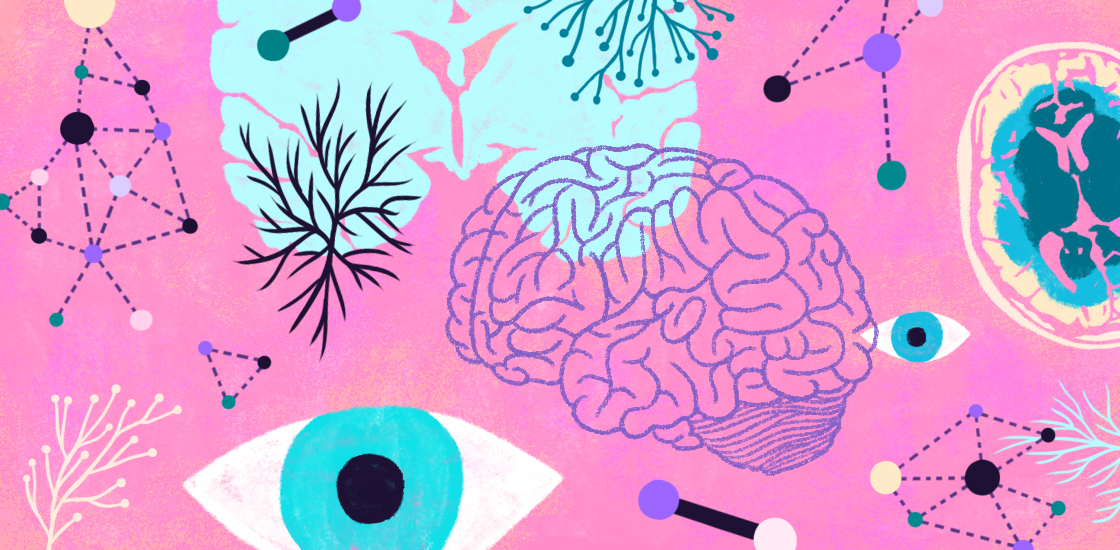The world we live in is not just a revolving sphere with its colossal expanse full of bunches of monotonous humans. It is by no means that this populace is uniform. We all are surrounded by thousands of very diverse individuals. However, why label people, why build up hierarchies within our society as per these mere differences among us? Well, something to ponder upon!
Nevertheless, have you ever tried to spare a glance even at those people who are normally put in the latter part of the social ladders? Has it ever crossed your mind that underneath all these inequalities and labels, the primal core of humans is the same for everyone? I bet it hasn’t! People with Autism or ASD (Autism Spectrum Disorder) are customarily victims of such unfavorable circumstances. Often they are overlooked and disregarded. ‘Autistic Pride Day’ is to commemorate the uniqueness and the similarity of the people on the spectrum. Hither is an articulation of ASD and its confines within the community.
What is Autism/ ASD?
Despite the various stigmatic misinterpretations fed to us, Autism is a neurodevelopmental disorder. Not in the slightest this condition is a disease. Moreover, it is a complex spectrum disorder known as ASD. Autism Spectrum Disorder is a broad scale of neurodiversity, composed of inter-related special characteristics with contrasting expressivity and severity in individuals with the said defect. Though many symbols like puzzle pieces, butterflies have been used to portray ASD, at present, it is resolved to use the rainbow-colored infinity symbol to represent the disorder. People with Autism are also dubbed as people on the spectrum. Although this condition has been around, most probably since the genesis of humankind, it was dug up almost a century ago. Back then when autism was still unheard of, they used the word itself to exhibit several forms of infirmities and dysfunctional behaviors. All the same considering all the previous attempts, Hans Asperger and Leo Kanner are regarded as the pioneers who initiated the basis of the modern study of ASD. Hans Asperger applied the term ‘autistic’ to describe a few of the unnatural and behaviors and habits he observed in a group of boys; it was exploited as ‘Autistic psychopathy’ which is today well- known as Asperger’s Syndrome.
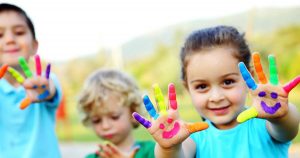
The Autism spectrum is comprised of a vast set of diverse conditions. Generally, this disorder can be detected during the first 3 years of human life. Characterized by the deficiency of social interaction, verbal and nonverbal communication in infancy, ASD is a life-long condition. It is not something that can be eradicated or to be precise, cured completely. Though studies have shown, through early intervention and necessary treatments, the symptoms can be lessened. According to the up-to-date statistics of WHO, about 1 in 160 children worldwide has ASD. What is more, further researches have claimed that Autism shows a male predomination; a ratio of 4:1 between male to women.
On the whole characteristics of ASD can be categorized into two sections.
- Early-onset troubles with social interaction, verbal and nonverbal communication.
- Atypical, Stereotypical/ repetitive, and restricted behaviors, activities, etc.
As mentioned above, severity and the expression of symptoms vary from individual to individual. The condition can span from mild to severe ASD. Hence this disorder is a spectrum, each autistic person’s abilities, habits, and interactions can differ by a great scope. No two people are the same. Each person is very unique from others. One person with autism might be able to live independently on his/her own, to lead a successful family life and whatnot whereas on the other hand others show severe symptoms and have to live the rest of their lives with the support of their peers.
Although the studies show the above-mentioned dyadic categorization, by and large, it has been noticed and debated upon that there are certain characteristics that cannot be put under the binary definition. That being the case, researchers have incorporated the term ‘spectrum’ to Autism, considering the fact that the degree of how much he/she shows the symptoms is individual to each person. That is the multiplex complication nature of ASD. Thus, every person in this spectra community has their share of distinctive strengths, weaknesses, and challenges. The degree to which a person is affected is individualized across many different areas. The following graph shows an exemplary colorful representation of the spectrum.

Common signs and symptoms
The majority of these symptoms are perceived in the first three years of a child. Deficiencies in social behaviors and nonverbal interactions such as reduced eye contact, facial expression, and body gestures can be depicted with an assuring observance over the babies during this period. As time goes by, whilst maturing, with numerous experiences encountered in countless places and drastic social situations people with Autism tend to adapt or learn certain behaviors from their surroundings. They do this in hopes of blending in with their peers or avoiding the spotlight. Although, most of these autistic symptoms might last throughout their lifetimes.
Children or adults with ASD might show symptoms such as mental retardation, emotional indifference, hyperactivity, aggression, self-injury, unusual sensory perception skills and experiences, motor clumsiness, insomnia, and repetitive behaviors such as body rocking or hand flapping, etc.
Apart from the above-named symptoms, signs such as;
- Avoid eye contact and prefers to be alone.
- Not look directly at objects when another person points at them.
- Repeat or echoing of words or phrases said to them or repeat words or phrases in place of normal language.
- Appear to be unaware when people talk to them, but respond to other sounds.
- Have trouble expressing their necessities using typical words or motions.
Causes and risk factors of Autism
There isn’t a particular medical test to diagnose Autism. By the signs and symptoms demonstrated by the children in their early childhood, this condition can be detected. There is not a permanent cure for Autism as well; only through constant treatments the gravity of this disorder can be reduced and managed. Latest studies have suggested that interaction between genetic and environmental factors may have contributed to the pathogenesis of ASD. Even though there are many myths circulating Autism declaring that bad parenting, vaccines, etc. cause Autism, researches have proven them wrong.
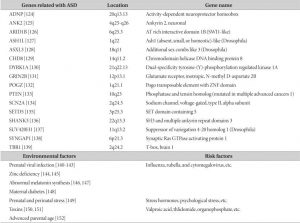
Aforesaid discoveries are only a fragment of the knowledge of Autism Spectrum Disorder, and there are heaps of unknown and shadowy that are yet to shed to light upon, as a single direct logic for this condition has not been found so far.
Autism and the society
Indeed there are plenty of misconceptions encircling people on the spectrum. For example,
- Children/ people with Autism are more aggressive.
- All people with Autism have an intellectual disability.
- There is a type of Autism epidemic.
- Autism is an illness in mental health.
- People with Autism are not capable of forming worthwhile friendships and relationships.
Needless to say, these are completely fallacious, but nonetheless, they still linger around. Because of such misleading information and their small-scale differences, people on the spectrum are subject to stigma, social discrimination, and malicious behaviors from the remainder. The heart of this problem is, of course, our society. We live in a community where everything is measured and regarded by the social ranks and achievements; stereotypes and fantasies are being crowned at the pinnacle of the social pyramid. Feelings, empathy, humanity have fled long ago. We all have forgotten that people with autism are also human beings who are a part of our very own kind. Most of the time, these people are bullied and harassed in schools, rejected, and hurt by their fellow companions. Don’t they try to escape from this prejudiced social hierarchy? Don’t they feel uncomfortable with all the peer pressure? Yes, they do! We may not like to admit it, but if we are being sincere, we have been frequently ignoring their feelings. We all have misunderstood the term, neurodiversity; hence they have been zapped out the friendships and the love they deserve.
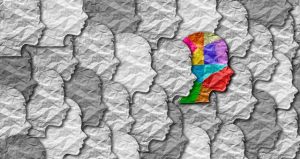
People with Autism use a technique called masking; Masking of autism is such a social survival strategy used by people with autism to camouflage or conceal certain behaviors. Masking begins when autistic people identify distinctive actions and doings that can be classified as ‘normal’. But it is said constant masking throughout their lifetimes can lead to depression and even severing of suicidal thoughts; since it means continual suppression of their inner personas.
Autistic Pride, Autistic Pride Day, and why it is needed
Autistic Pride Day falls on June 18th. Many people are not aware of this specific day, as the National Autism awareness day is dated on the 2nd of April, the Autism awareness month. Autism awareness day mainly focuses on spreading the message of social awareness and social acceptance of ASD. On the contrary, Autistic Pride day is about if said in simple words, being ‘Autistic and Proud’; celebrating the uniqueness of ASD. It is to commemorate the fact that they are also unique individual people, not mere burdens.
Autistic pride is about recognizing the importance of pride for these people on the spectrum and how their identity could bring a positive advance to the community. The foremost Autistic Pride day was celebrated in 2005 by a self-advocacy group called Aspies For Freedom (AFF), to allow the people with Autism Spectrum Disorder (ASD) to connect with each other and to celebrate their neurodiversity and differences. The day is organized and led by autistic people, which makes it an important part of the struggle for acceptance. Autistic pride is also represented by the rainbow-colored infinity symbol, which illustrates the diversification and boundless yet correlated complexity of the condition; unfathomable number of possibilities. On this day these people make it a window of opportunity to voice out the hardships, their necessities as people on the spectrum; that Autism is not an illness, and to speak up against some spiteful actions of neurotypical persons. Multiple activities are held on this day to accommodate people who are pressured about this with the required knowledge on the said specific condition.
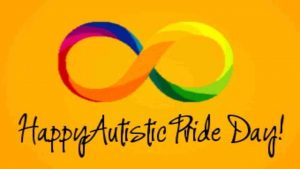
ASD is something that should be respected, neither be feared nor condemned. This may sound rhetoric to some but people on the spectrum are beautiful and should be treated with a rightful dignity, such we humans all deserve. They should not be labeled as per the satisfaction of our shrewd stigmatic societies. People on the spectrum live in a box full of skepticism and distress due to the many ruthless judgments of the general public. Creating a world where autism and many disorders are accepted, valued and every single person regardless of their status, and treated with utmost respect and equality will minimize the necessity of masking and its negative consequences. Supposing ASD is a blessing in disguise, indeed we can make this world a better place without harassment. Furthermore, autistic pride should not be limited or restricted only to a single day. It is something that needs to be accepted and honored on a daily standard.
“If you have met one person with Autism, you have met one person with Autism.”
References:
- Park, H., Lee, J., Moon, H., Lee, D., Kim, B., & Kim, J. et al. (2016). A Short Review on the Current Understanding of Autism Spectrum Disorders. Experimental Neurobiology, 25(1), 1-13. doi: 10.5607/en.2016.25.1.1
- Nag, H., Nordgren, A., Anderlid, B., & Nærland, T. (2018). Reversed gender ratio of autism spectrum disorder in Smith-Magenis syndrome. Molecular Autism, 9(1). doi: 10.1186/s13229-017-0184-2
- World Health Organization. 2021. Autism Spectrum Disorder [online] Available at: https://www.who.int/news-room/fact-sheets/detail/autism-spectrum-disorders
- Centers for Disease control and Prevention. 2020. Autism Spectrum Disorder (ASD) [online] Available at:https://www.cdc.gov/ncbddd/autism/facts.html
- Autism Association of Western Australia. 2021. Common Misconceptions [online] Available at:https://www.autism.org.au/what-is-autism/common-misconceptions/
- American Autism Association. 2020. – Autistic Pride day [online] Available at: https://www.myautism.org/news-features/autistic-pride-day
- Autistic Empire. 2020. – Autistic Pride [online] Available at: https://www.autisticempire.com/autistic-pride/
Image Courtesies:
- Featured image: https://bit.ly/3vCpTcd
- Figure 1: https://bit.ly/3vqzQcj
- Figure 2: https://bit.ly/3iFSvyh
- Figure 3: https://bit.ly/3xiMdZo
- Figure 4: https://bit.ly/3wuglBb
- Figure 5: https://bit.ly/2UacQBF

